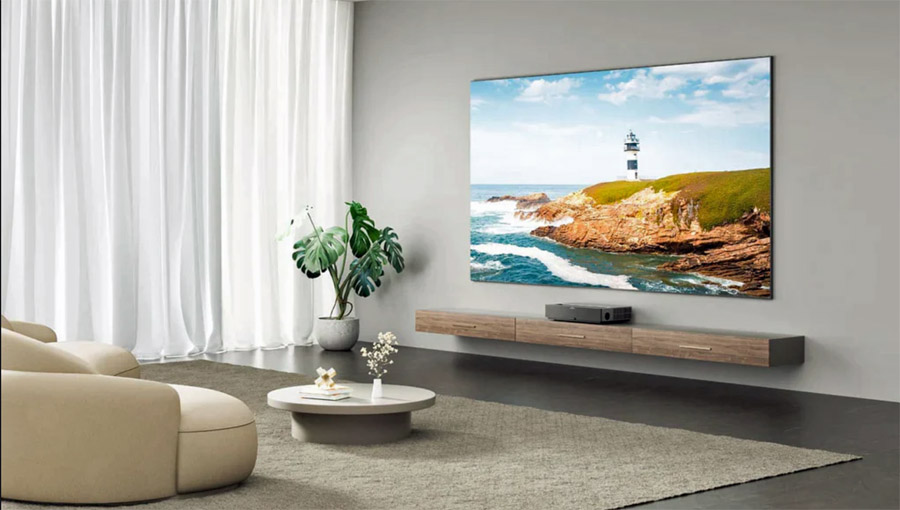As we explained in “WTF is HDR?” High Dynamic Range is a new feature of Ultra HD (4K/8K) content and displays. With HDR, displays can now reproduce a wider range of colors and luminance (brightness) values, which means they can create brighter, more colorful, more dynamic images. HDR is available in two types: static HDR and dynamic HDR. Dolby Vision is a type of dynamic HDR.
While static HDR uses a fixed range of values to represent luminance for the entire TV show or movie, dynamic HDR like Dolby Vision uses variable metadata to adjust the luminance range dynamically in response to the content on the screen at any given time. This allows a Dolby Vision-capable display to adjust its HDR performance more effectively and accurately as the brightness (or darkness) of the image changes from scene to scene or even from shot to shot. With Dolby Vision, bright scenes still maintain the details in bright areas of the screen (highlights) while dark scenes are also able to effectively reproduce shadow detail.

Dolby Vision also supports WCG (Wide Color Gamut), up to the REC.2020 color standard, with up to 12 bits of precision. Wide Color Gamut is to color reproduction as HDR is to brightness. The greater the range of colors and brightness levels your display supports, the more dynamic and accurate the picture will look.
Where and How to See Dolby Vision
You can find Dolby Vision in premium movie theaters. It normally appears in conjunction with Dolby Atmos sound in what’s called “Dolby Cinema.” Dolby Vision has also made its way to the home in high performance TVs, monitors and home projection systems as well as in streaming services and on physical media (Ultra HD Blu-ray Discs).

Dolby Vision is currently the most popular dynamic HDR format. For physical media, you can find Dolby Vision content on over a hundred Ultra HD Blu-ray Discs. It is also available on the top video streaming services including Netflix, Amazon Prime Video, HBO Max, Apple TV+, Disney+ and Hulu. In comparison, Dolby Vision’s competitor in the dynamic HDR space, HDR10+ is currently only available on Paramount+ and Amazon Prime Video as well as on a few dozen UHD Blu-ray titles.
Are we looking at another format war? Sort of, but the good news is that Dolby Vision and HDR10+ content also includes a standard (static) layer of HDR10 meta data that allows the content to be rendered on any HDR10-capable display. So while Dolby Vision content won’t look as good on a non Dolby Vision-display, it will still look pretty good thanks to the HDR10 layer.

While Dolby does earn licensing revenue from manufacturers who include Dolby Vision capability in their products, the company also maintains minimum quality requirements for these products. This makes it very unlikely you will find Dolby Vision capability on a lesser quality 4K TV. Today you can find Dolby Vision in OLED TVs from LG and Sony (among others) as well as in a few projectors like the ForMovie Theater UST projector.

While Dolby Vision content is normally mastered for up to 4,000 nits in max brightness, and the format actually supports up to 10,000 nits, there aren’t actually any consumer displays that can reach these numbers yet, and there may not be for some time. OLED TVs typically max out the luminance between 800 and 1000 nits while some LED/LCD sets can peak as high as about 1,500-2,000 nits. For this reason, another important part of the HDR process is enabling each TV or projector to “map” the HDR values of the content to the specific capabilities of the display. This is called “HDR Tone Mapping” and it’s a feature that can make or break a display when it is displaying HDR content. Dolby Vision displays tend to be particularly strong with HDR tone mapping so you get excellent performance on these displays when displaying Dolby Vision content.
Related Articles:











More Stories
How To Download Instagram Videos, Photos and Stories
Transport in Cities of the Future – Grape Up
Here’s All the Science Hitching a Ride on Artemis I